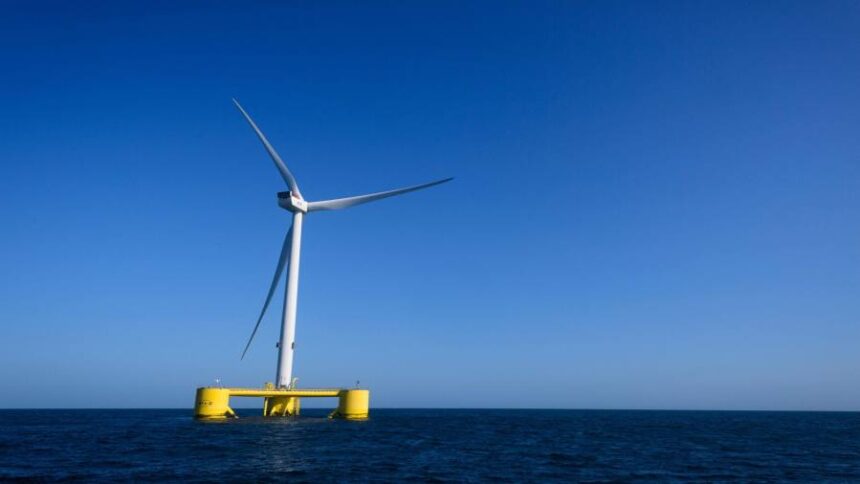Receive free Climate change updates
We’ll send you a myFT Daily Digest email rounding up the latest Climate change news every morning.
Costly, complex projects that require collective action are a hard sell. The energy transition is one of these. UK voters are showing signs of “climate fatigue”. Policymakers should respond by finding ways to lower the overall cost of the transition — and by giving consumers ways to cut their own bills.
It isn’t hard to see why net zero may be falling out of favour. The country’s drive to decarbonise its energy system has delivered cleaner electricity. But it has also loaded up energy bills. About 40 per cent of the typical bill goes to cover policy and network costs, which are piled willy-nilly on everyone’s shoulders.
With customers facing a cost of living squeeze from higher mortgages and food inflation, that puts politicians in a tight spot. Indeed, in the wake of last week’s by-elections, Tory grandees are pressing Premier Rishi Sunak to drop costly climate targets in hopes of garnering more votes.
One solution would be to make the energy transition less of a cumbersome beast. The government’s ongoing Review of Electricity Market Arrangements — REMA for short — provides an opportunity to do so.
A key proposal in the review is to move from a single national electricity price to so-called locational marginal pricing. Under LMP, the price would vary by zone, depending on the specific cost of producing and delivering electricity in the area.
The problem with the UK’s national electricity price is that it is a convenient fiction. It assumes electricity can always be transported from wherever it is generated to wherever it is needed. In reality, grid constraints mean that some of the cheap renewable power generated in Scotland goes to waste for lack of accessible demand. Meanwhile, expensive gas-fired power plants need to be switched on to keep the lights on in London.
The system depends on National Grid to keep it in sync. The Electricity System Operator pays wind farms not to produce. It also pays gas-fired plants down south to kick in. The cost of all of these balancing and dispatching activities is lumped together and spread on everyone’s bills. As the transition progresses, that cost is expected to balloon because of the huge grid investment needed and the inevitable lag.
Locational pricing would split the UK into zones that reflect grid constraints. Each would have its own price, set by the marginal cost of electricity in the area. At times of freely flowing power, prices in different zones would converge. But when Scotland produces more wind power than it can use or send south, prices in its zone would fall to a level that makes generation uneconomic.
“The value of energy is increasingly specific to time and place”, says Dan Monzani of Aurora, an energy consultancy. “Pricing which reflects this value would — at least in theory — push new generators and consumers to make intelligent siting decisions”. Wind farms might move closer to demand. Data centres might pick Scotland owing to its cheap electricity. This would reduce the required investment in the network, cut curtailments and support the political levelling-up agenda.
Of course, there are other factors at play, too. As Monzani explains, “the location of offshore wind farms is currently directed by central seabed leasing and networks planning, so their relocation is likely to be constrained in the short term”.
Critics therefore fear that we may end up building a hugely complex system, with little to show for it in terms of response. On top of that, new wind farms would need to pay more for capital to reflect volatile revenues — further reducing the benefit of LMP.
This may well be true. But one needn’t necessarily up sticks to reap the benefit of price signals. LMP, coupled with smart meters and half-hourly prices, would give consumers — particularly those in the expensive south — a good incentive to use energy more wisely. They could cut their bills by switching on their washing machines and charging their electric vehicles when the electricity price is low. In so doing, they would also reduce the need to invest in the network. “We need innovative new retail models which allow consumers to save money by using energy when the grid is not congested,” says Ben Shafran from Energy Systems Catapult, a not-for-profit consultancy.
Perhaps the most important benefit of introducing price signals is the one that is hardest to quantify. LMP might deliver solutions and technologies that we have not yet thought of at all. That, after all, is what markets tend to do better than planned economies. This profound rethink carries risk, of course. But so does a centrally planned pathway to net zero. As growing climate fatigue reminds us, a successful transition depends on keeping customers onside.







